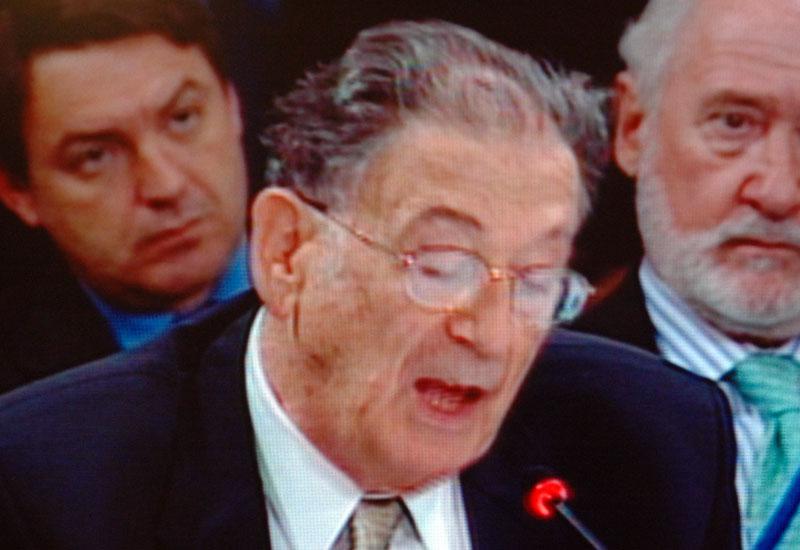Yad Vashem’s mission is to memorialize and research the genocide of the Jewish people at the hands of National Socialist Germany and its collaborators, and educate about it. That is the purpose of the new museum. Yad Vashem deals not only with the Jewish victims, but also, and in detail, with the perpetrators and the bystanders. Yet our emphasis is on the Jews – they were not just objects of an evil Nazi regime; they were subjects, actors, with a tremendously rich, variegated, often contradictory cultural heritage. We want to know who they were, what they did before they became victims, how they reacted to the unexpected disaster. We do not present a rosy, nostalgic picture; we present the Jewish people as they were, with all the warts, as real people, not only the large group, but also, perhaps mainly, the individuals, their families, and their communities. We do that for two reasons: first, because Yad Vashem is not only an Israeli institution; it represents the Jewish people as a whole in memorializing the Shoah, the most extreme and unprecedented genocide to date. Second, because there are always more victims than perpetrators, and for humanity as such it is crucial to understand how victims of mass murder react.
Yad Vashem deals, exclusively, with that unprecedented catastrophe, the Shoah. But by doing so, it deals with the phenomenon of genocide as such; every genocide is always directed against a specific group, for specific reasons, at specific times. It is that that makes that murderous experience universal. The specificity of the Shoah and its universal character are two sides of the same coin. By dealing with our own people, the Jews, we deal with all of humanity - all of you, ladies and gentlemen, could be Jews, and who knows who the Jews might be the next time.
The Shoah was unprecedented; but that means that it could serve as a precedent, and, unfortunately, it already has done so. The Shoah should have served as a warning, but it has not done so. “Never again” and “we shall never forget” are false slogans. When we endlessly repeat them, we lie to ourselves – in fact, it has happened again, though not in the same form, and we would love to forget it, but we cannot, because the fact that we are the only mammals that kill each other in large numbers intrudes itself inexorably into our consciousness. We, the Jews, like other groups that have been victims of genocides, are a traumatized society, and we will probably remain so for a very long time to come. But not just we: civilized society as a whole is possessed by the genocide of the Jews, and again, that is not likely to change for a long time to come.
Between 1900 and 1987, as an American sociologist has shown, 169 million civilians were murdered by governments and political organizations, as compared with 34 million soldiers who fell in battle in that period, which includes the two world wars. Out of these, 38 millions were murdered in genocides, according the definition of the Genocide Convention of 1948. Of these, close to six millions in the Shoah. We, every single one of us, are constantly torn between two extremes: the desire for life and continuity, and the desire to, annihilate, murder our neighbor or neighbors. Yad Vashem, and its museum, its School of Education, and its Research Institute, apart from their main task of memorializing the Shoah, are devoted to the effort to move people from nearer the murderous extreme to nearer the life-asserting one.
The Shoah was caused by hatred of Jews, which we call antisemitism. Other, political, social and economic factors played a role, but the basic motivation for the genocide was ideological; and antisemitism was a central factor in Nazi ideology. In other words, the Nazi attempt to control the world, which led to a war in which dozens of millions died and which destroyed Europe, was motivated to a large extent by antisemitism. Today we are witnessing a resurgence of this hatred, among the radical minority within Islam, and in some of the enlightened parts of western societies. Hatred is directed against the collective Jew, Israel, and against the individual Jew, who is seen as the representative of the collectivity. Political criticism of Israel is perfectly legitimate, but the new form of antisemitism demonizes Israel, applies double standards to its policies, and wants to ostracize, and finally eliminate it. That is, ultimately, an agenda for another genocide. Sixty-odd years ago, a major power adopted antisemitism as its ideology, and the result was mass death. Was that not enough? Should that not motivate all of us to fight this malady, not only with legal measures, but through political and historical education?
The museum deals with the past, but the past is the present. The Shoah happened because it could happen, and it, or something similar to it, can and does happen again. You, ladies and gentlemen, represent countries that together can prevent genocide, or at least stop it, or at least reduce the danger of its occurring. Will you, and others, learn from the past? Will you take the things you see in the new museum as one of your guides for action?

